A remarkable mummified body has been discovered in Nazca, Peru. While mummies can draw attention, this particular find may alter the story of human origins. The crouched mummified body of a humanoid figure with an elongated skull and three fingers on each hand is certainly fascinating, but is it real? And if it is, what could it tell us about human history?
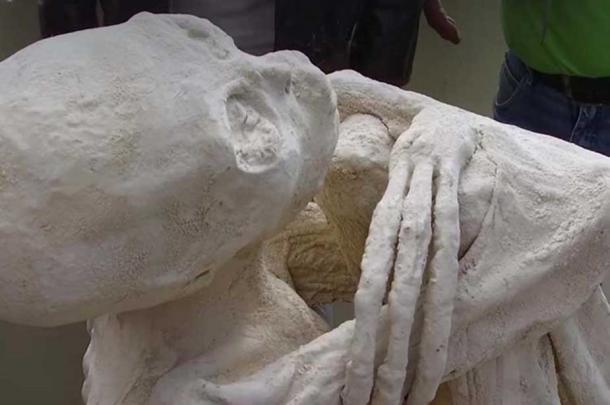
Close up of skull and three, long fingers on the body. ( Screenshot Youtube )
Open-minded scientists studying human origins may find themselves in a situation where they have to identify this surprising discovery as true, probable, or a false find. It is important in these situations to remain curious yet skeptical. Numerous hoaxes have been taken as fact in archaeological history, but there are just as many (or more) factual finds that have been discredited for not fitting into mainstream science. As shown with the recent unearthing of 300,000-year-old remains in Morocco, the history of humanity is always transforming. We should keep an open mind yet stay apprehensive about jumping to conclusions on new discoveries, even if they seem incredible at first.
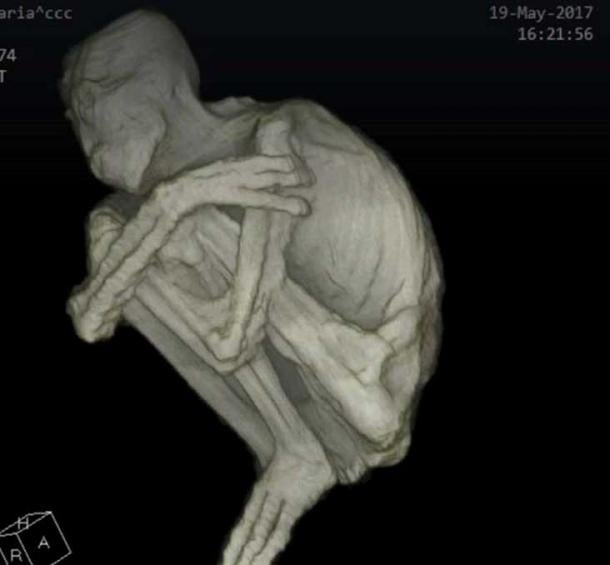
CAT scan image of the body ( Screenshot Youtube )
Jaime Maussan , an investigative journalist from Mexico, first introduced this find to Gaia filmmakers. They joined a team of researchers and scientists just outside of Nazca to investigate the story of the mummified body. A video discussing the analysis of results so far suggests that the body may be unique to the known fossil record.
- New DNA Testing on 2,000-Year-Old Elongated Paracas Skulls Changes Known History
- Unravelling the Genetics of Elongated Skulls – Transcript of Interview with Brien Foerster
One of the lead scientists examining this case is Dr. Konstantin Korotkov , a professor at Saint-Petersburg University. Dr. José de Jesús Zalce Benítez, Forensic expert at the National School of Medicine of Mexico, and Natalia Zaloznaja MD PhD, Head of image analysis of the Medical Institute MIBS, also participated in the initial examinations.
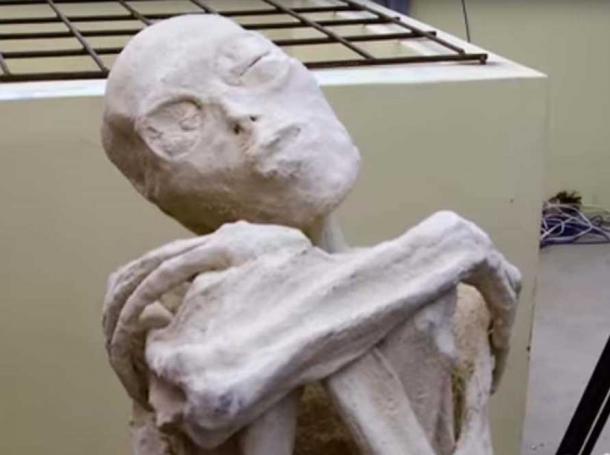
The face has large eyes, small nose and only holes where human ears would be ( Screenshot Youtube )
The body measures 168cm (5’6”) tall and has proportions very similar to humans. Features that set the individual apart however are the three long fingers on each hand and the elongated skull and lack of nose and ears (with only holes in these areas.) Dr. Korotkov asserts in the video that these features are not a deformity, but the individual is “another creature, another humanoid.”
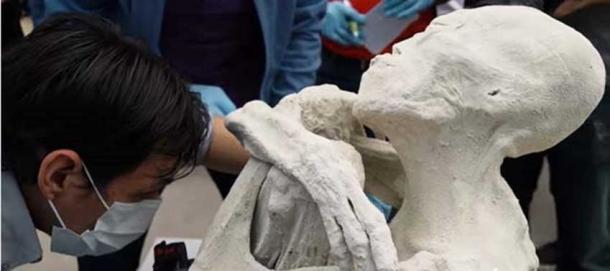
The skull is elongated compared to a human ( Screenshot Youtube )
This is not the only example of an elongated skull found in Peru. The ‘ Paracas skulls ’ are the largest elongated skulls found anywhere in the world. They number more than 300 and were found in a graveyard in Paracas, Peru. Some of these skulls date back around 3,000 years. The reason for the shape of these skulls has long been debated, as have their origins. DNA testing of the skulls placed their origins in Europe and the Middle East. Other strange features of these elongated skulls are the different location of the foramen magnum, where the spinal cord attaches to the skull, from normal human skulls and their larger size and heavier weight.
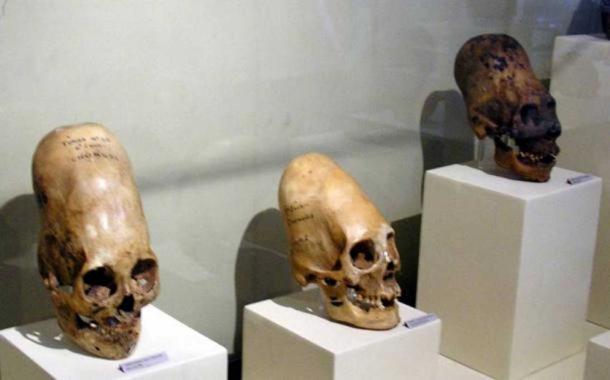
Elongated skulls on display at Museo Regional de Ica in the city of Ica in Peru. ( Public Domain )
Returning to the mummified body found near Nazca, it is covered in a white powder which was apparently used to dry the skin and preserve the remains. It gives the skin a greyish appearance. The internal organs are said to be intact.
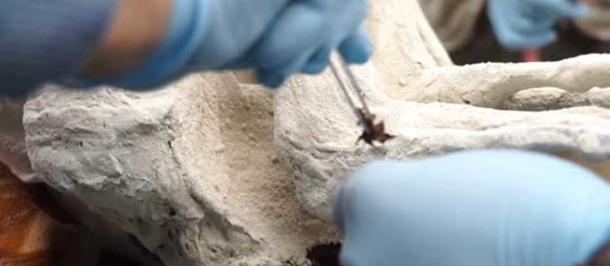
A sample of grey skin was removed from under the white preserving powder ( Screenshot Youtube )
Carbon dating of samples from the body show dates between 245 – 410 AD. DNA sequencing is currently underway. Melissa Tittl, Gaia’s Director of Original Content, says in the video that further analysis of CAT scan results is also in progress.
- Mummified Head of Newborn Baby with Extremely Elongated Skull Found in Peru
- Bizarre Alien-Like Skull Unearthed in Korea was Naturally Formed
M.K. Jesse, a Musculoskeletal Radiologist at the University of Colorado Hospital, told Gaia that it seems unlikely anyone made changes to the skull or hands to provide their unique appearance.
Senior Director of Content for Gaia, Jay Weidner, says that petroglyphs located near the mummified body show three-fingered humanoid figures as well. Dr. Korotkov pointed out that there are many other examples of three-fingered figures in South American iconography – could these depictions have been based on reality? Or are they only art?
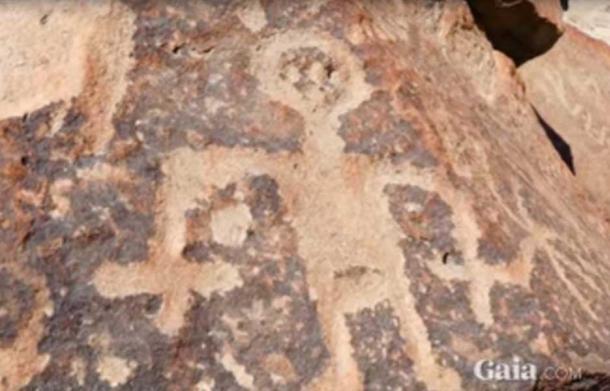
Three-fingered being found amongst petroglyphs nearby in Nazca ( Screenshot Youtube )
Many questions remain regarding this mummified body: If it is real, is this an example of a forgotten human species? Are the unique features deformities – either developmental or intentional? Could this be evidence of a non-human species? If proven true, what would this discovery mean for the study of human origins and the ancient past? To answer such questions, further examination of the find is required.
Top Image: Alleged Mummy found at Nazca, clearly has three fingers and toes ( Screenshot Youtube ) Source: Gaia.com